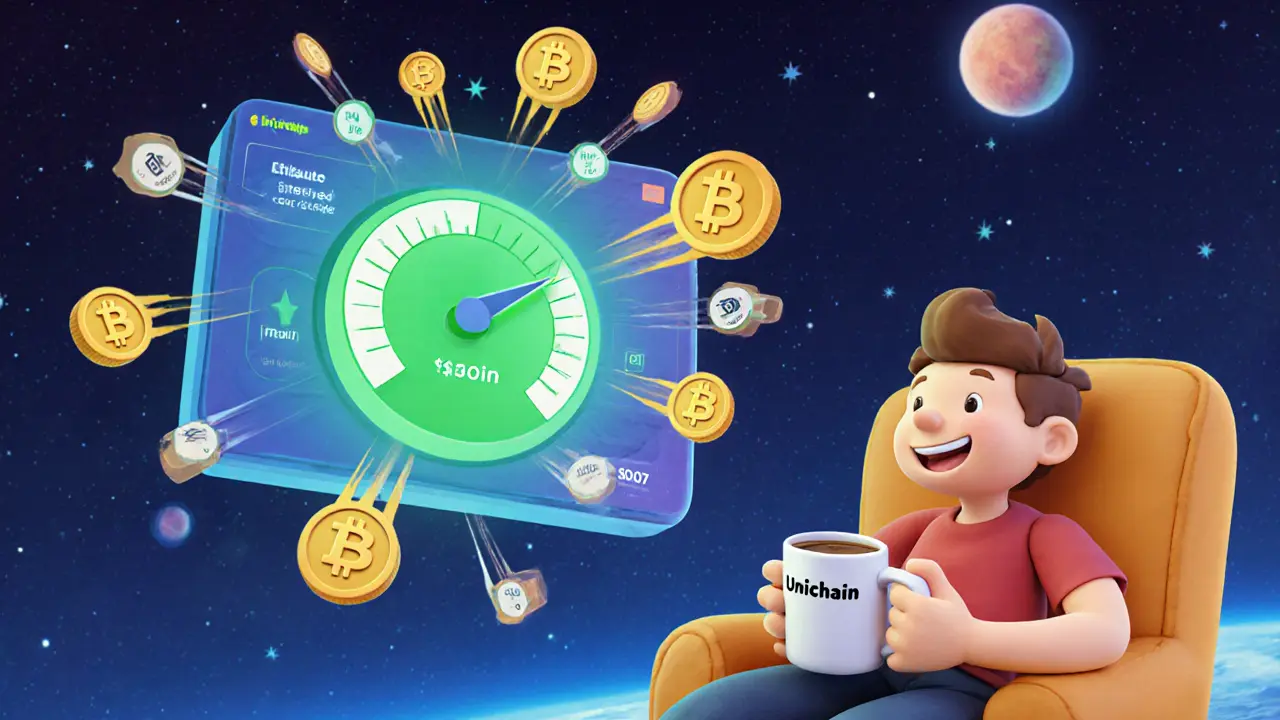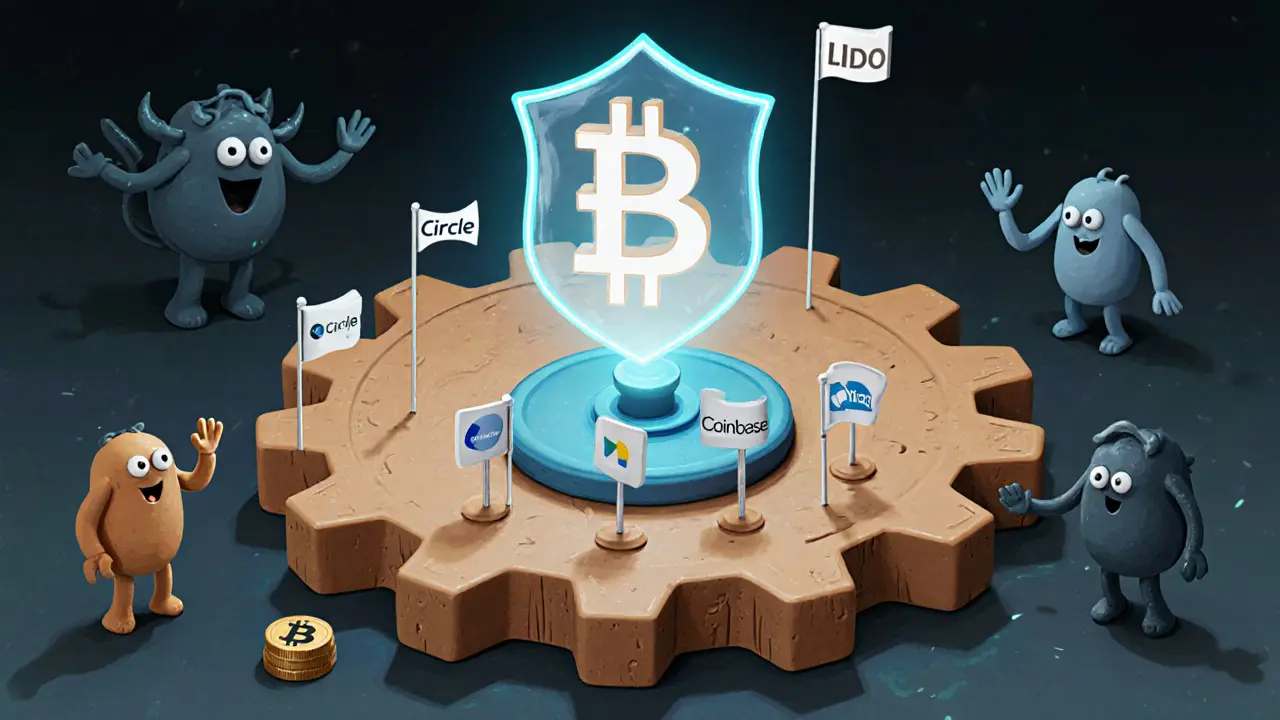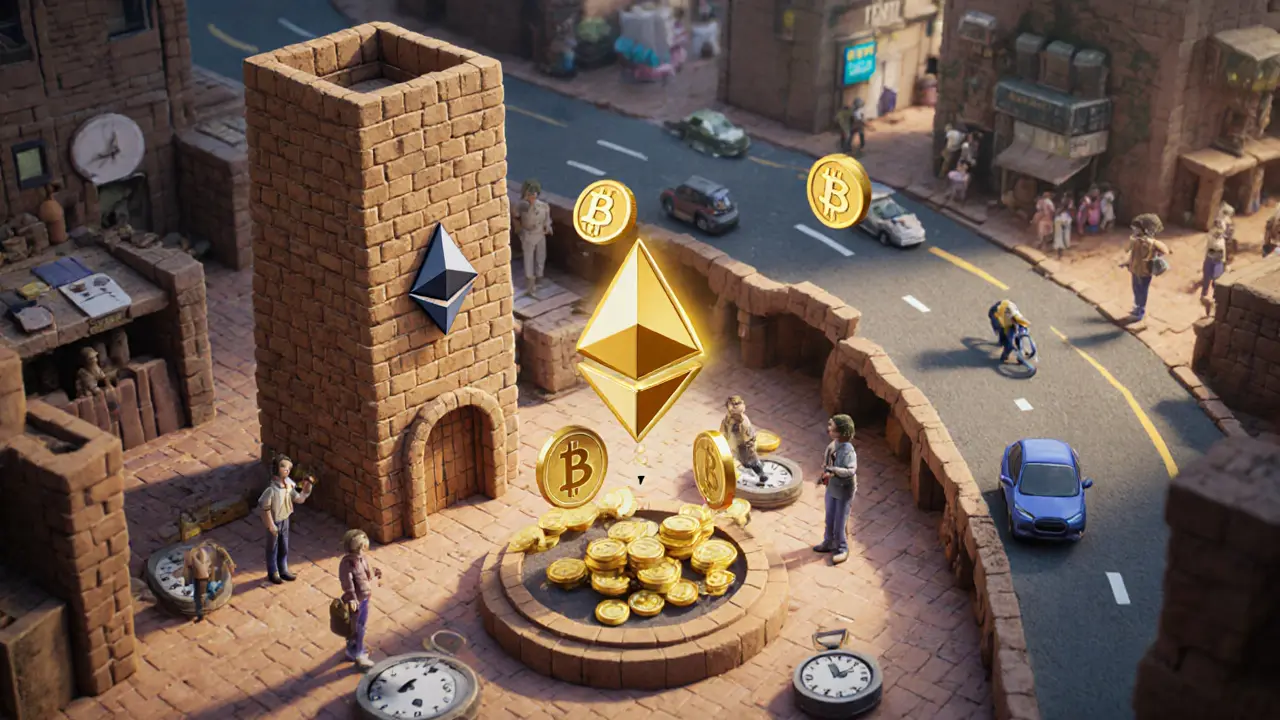Uniswap v2 on Unichain: A Real-World Review of Speed, Cost, and Usability
 Apr, 3 2025
Apr, 3 2025
Uniswap Fee Savings Calculator
Current Ethereum Gas Fee
Unichain Benefits
Unichain offers 95% lower fees compared to Ethereum mainnet.
Trades settle in 1 second compared to Ethereum's 13 seconds.
Fee Comparison
Your Monthly Savings
Your current monthly fee on Ethereum
Your monthly fee on Unichain
Your total monthly savings
$15.00
$0.70
$14.30
When you open the Uniswap app and see your trade execute in under a second for less than $0.05, it’s hard to believe you’re still on the same network that used to cost $20 and take 10 minutes just to swap ETH for USDC. That’s the reality of Uniswap v2 on Unichain-a new Layer-2 network built by Uniswap Labs that’s rewriting the rules for decentralized trading.
What Exactly Is Unichain?
Unichain isn’t just another Layer-2. It’s Uniswap’s own blockchain, built from the ground up to handle DeFi trades faster and cheaper than anything else. Launched on February 11, 2025, it runs on Optimism’s OP Stack, meaning it’s compatible with Ethereum’s security model but operates independently with near-instant finality. Unlike Arbitrum or Polygon, which try to be general-purpose blockchains, Unichain is laser-focused on one thing: making Uniswap better.It’s not a sidechain. It’s an optimistic rollup with permissionless fault proofs active from day one. That means if a sequencer tries to cheat, anyone can challenge it and get their funds back-no central authority needed. During its four-month testnet phase, Unichain handled over 95 million transactions and 14.7 million smart contract deployments. That’s not a demo. That’s real user behavior at scale.
How Much Faster and Cheaper Is It?
On Ethereum mainnet, Uniswap trades were eating up 14.5% of all gas fees. Now, on Unichain, those same trades cost about 95% less. A typical swap that used to cost $1.50 on Ethereum now costs $0.07. For liquidity providers, that’s a game-changer. Adding or removing liquidity used to mean paying hundreds of dollars in fees across multiple transactions. Now, you can do it for under $1.Block times? On Ethereum, it’s 13 seconds. On Unichain, it’s 1 second. And they’re working on cutting that down to 250 milliseconds using Flashbots’ Trusted Execution Environment. That’s not just faster-it’s stock-trading speed. If you’ve ever missed a price because your transaction was stuck in a mempool, you know how valuable that is.
How Does Uniswap v2 Work on Unichain?
If you’ve used Uniswap before, you already know how to use it on Unichain. The interface looks identical. The same token pairs. The same slippage settings. The same wallet connection. The only difference? Everything happens faster and costs less.You start by bridging your assets from Ethereum mainnet to Unichain. You do this through the Uniswap app itself-no third-party bridge needed. The process takes under 10 minutes, and once your funds arrive, you’re immediately trading on Unichain’s native chain. There’s no need to learn new tools. No confusing menus. No new wallet setup.
Uniswap v2, v3, and v4 are all live on Unichain. So are the wallet, the analytics dashboard, and the liquidity mining programs. If you were providing liquidity on Ethereum, you can now move your positions over and start earning the same rewards with a fraction of the cost.
Who’s Using It?
The early adopters aren’t just random traders. Major DeFi protocols like Circle (USDC), Coinbase, and Lido launched on Unichain at day one. That’s not marketing fluff-it’s infrastructure-level trust. If a company like Circle, which manages billions in stablecoin reserves, is deploying its smart contracts on Unichain, it’s because they’ve tested it and believe in its security and reliability.Over 100 projects went live with Unichain at launch. That includes lending platforms, yield aggregators, and even NFT marketplaces-all built to take advantage of the low fees and fast speeds. The network’s uptime during testnet was 99%. That’s enterprise-grade reliability.

What’s Different About the Fees?
Uniswap Labs used to make money by charging a small UI fee on trades. That’s gone. Now, they take 20% of all trading fees generated on Unichain. The Optimism Collective gets 2.5% of gross revenue or 15% of net revenue-whichever is higher. The rest goes to the sequencers who process the transactions.This is a huge shift. Instead of making money off users, Uniswap Labs now makes money when the protocol succeeds. That means their incentives are aligned with yours. More volume? Higher rewards. More liquidity? Better prices. More stakers? Stronger security.
Eventually, sequencer operations will be handed over to UNI token stakers. That’s the endgame: a fully decentralized, community-run exchange powered by its own token economy.
Is It Safe?
Yes. Unichain inherits Ethereum’s security through its use of fraud proofs. Anyone can audit the state root and challenge invalid transactions. It’s not just “trustless”-it’s verifiably trustless.There’s no central operator with a kill switch. No team can freeze your funds. No governance vote can shut down your position. The code is open. The fault proofs are permissionless. And the testnet ran for four months under real pressure without a single exploit or outage.
Compared to other Layer-2s that launched with centralized sequencers and delayed fraud proofs, Unichain’s approach is leagues ahead. It’s not just safer-it’s designed to be safer from day one.
What About Liquidity Migration?
Right now, most of Uniswap’s liquidity is still on Ethereum. But that’s changing fast. Over $5 billion in assets are currently locked in Uniswap protocols. If even half of that moves to Unichain, it’ll be the biggest liquidity migration in DeFi history.Uniswap hasn’t forced anyone to move. But they’re making it easy. The app shows you your current liquidity positions and gives you a one-click option to bridge them over. They’re also planning incentive programs-think bonus UNI tokens or reduced fees for early migrators.
For liquidity providers, the math is simple: lower fees = higher net returns. Even if you earn the same APY, your costs drop by 95%. That’s not a small gain. That’s a 20x improvement in efficiency.

What’s Next?
Unichain’s roadmap is clear: faster blocks, full decentralization, and deeper interoperability. The next big step is achieving 250ms block times using Flashbots’ TEE tech. After that, sequencer control will shift to UNI stakers. And Unichain will start connecting to other OP Stack chains like Base and Optimism itself-creating a true Superchain of DeFi.The Uniswap Foundation has $36.81 million in cash and stablecoins set aside for grants and ecosystem growth. That’s not a side project. That’s a long-term bet.
Who Should Use It?
If you’re trading crypto daily, providing liquidity, or using DeFi apps regularly, Unichain isn’t just an upgrade-it’s a necessity. The cost savings alone make it worth switching. But the speed? That’s the real win. No more waiting. No more missed opportunities. Just smooth, instant trades.For long-term holders? If you own UNI, Unichain adds real utility. Your token isn’t just a speculative asset anymore. It’s the key to securing the network and earning a share of trading fees. That’s a powerful shift in value.
For newcomers? Start here. There’s no reason to begin on Ethereum mainnet anymore. The fees are too high, the speed too slow. Unichain is the new default for DeFi.
Final Thoughts
Uniswap v2 on Unichain isn’t a tweak. It’s a revolution. It solves the two biggest problems in DeFi: cost and speed. And it does it without sacrificing security or decentralization.Other Layer-2s are trying to be everything. Unichain is just trying to be the best place to trade crypto. And right now, it’s winning.
Is Uniswap v2 on Unichain the same as on Ethereum?
Functionally, yes. The interface, token pairs, and trading mechanics are identical. The only difference is speed and cost. On Unichain, trades settle in under a second and cost 95% less than on Ethereum mainnet. Your wallet, your positions, and your trading experience stay the same-just much faster.
Do I need a new wallet to use Unichain?
No. You use the same wallet you already have-MetaMask, Coinbase Wallet, or any EVM-compatible wallet. Just connect it to Uniswap on Unichain, bridge your funds over, and you’re ready to trade. No new keys, no new seed phrases.
How do I bridge funds to Unichain?
Go to the Uniswap app, click on your wallet balance, and select "Bridge to Unichain." You’ll be guided through the process step-by-step. It takes under 10 minutes, and the fee is typically less than $1. Once your assets arrive, they’re immediately usable on Unichain.
Is Unichain safe from hacks?
Yes. Unichain uses permissionless fault proofs, meaning anyone can challenge invalid transactions. If a sequencer tries to steal or manipulate data, the system allows users to prove fraud and recover funds. This is far more secure than Layer-2s that rely on centralized operators or delayed fraud windows.
Will Uniswap v2 on Ethereum shut down?
Not anytime soon. Ethereum mainnet will continue to operate as a settlement layer. But most new activity is expected to move to Unichain due to its cost and speed advantages. Uniswap Labs is encouraging migration with incentives, but users can still trade on Ethereum if they choose.
How does Unichain affect UNI token value?
Unichain gives UNI real utility. Staking UNI will eventually let you become a sequencer and earn a share of trading fees. That’s a direct revenue stream tied to network usage. As more trades happen on Unichain, UNI becomes more valuable-not just as a speculative asset, but as a functional part of the system.
Can I use Unichain with other DeFi apps?
Yes. Unichain is EVM-compatible, so any DeFi app built for Ethereum can run on it. Protocols like Aave, Compound, and Curve are already live or planning to launch. You can lend, borrow, and earn yield just like on Ethereum-but with 95% lower fees.
Tony spart
November 27, 2025 AT 18:29Unichain? More like Uni-scam. They’re just rebranding centralized crap as ‘decentralized’ so they can charge more in hidden fees. 95% cheaper? Lol, wait till the sequencers start front-running your trades and you’re paying 500 gwei in tips to get your swap through. And don’t even get me started on ‘UNI stakers securing the network’-yeah right, like the top 10 whales aren’t already running 90% of the sequencers. This isn’t innovation, it’s corporate capture with a blockchain veneer.